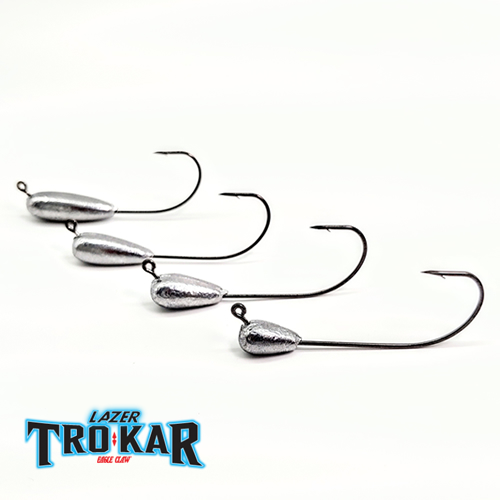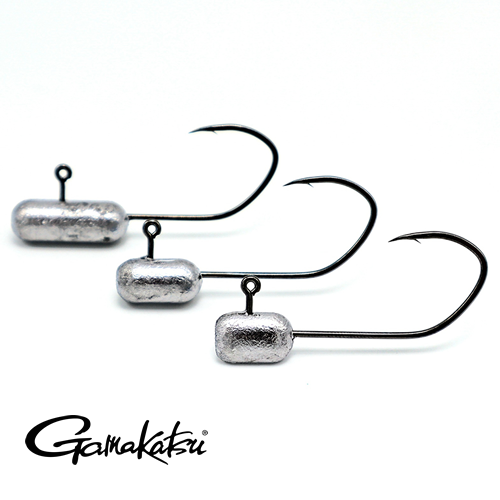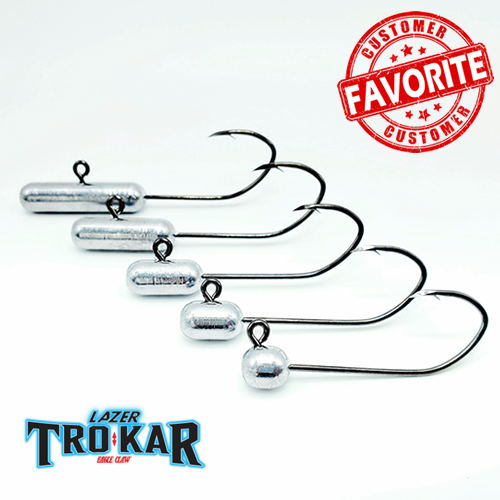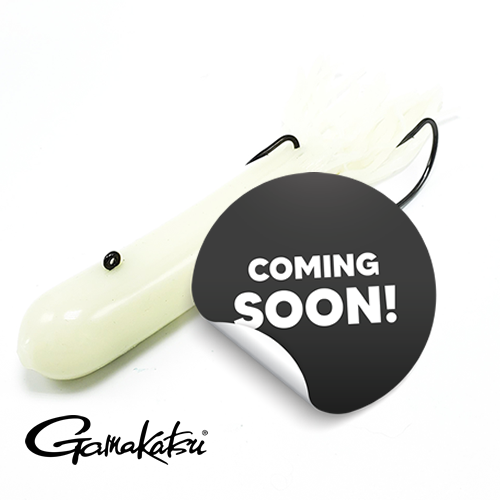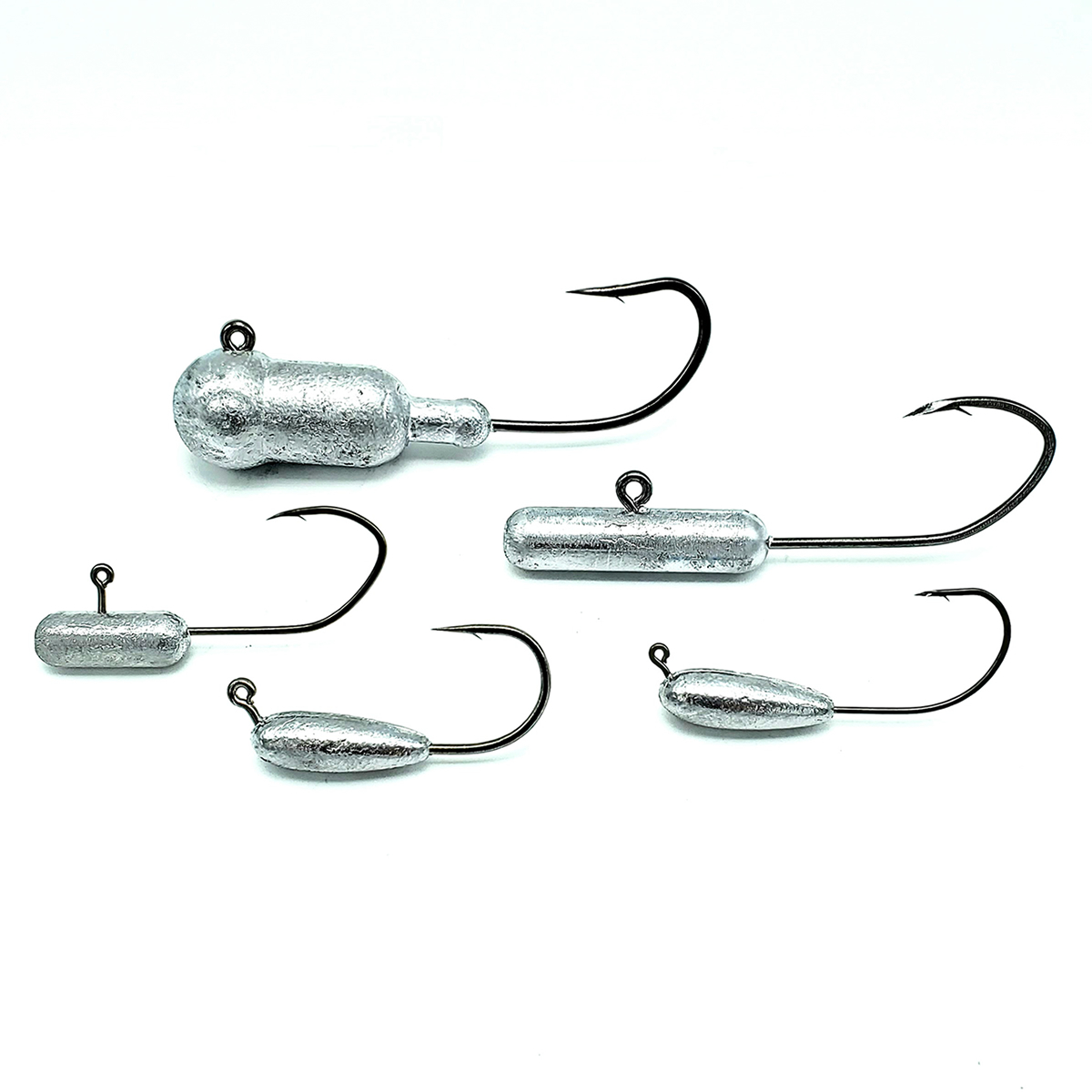
Each tube jig head is unique to the style of fishing you will be doing and the size of the tube you are fishing with. Some are better for vertical jigging, some are better for casting, and others are better for digging in the dirt.
A couple of examples would be our Mega tube heads which are designed to vertical jig for deepwater predators with big tubes, whereas our short shank tubes with 60-degree line ties are for smaller tube jigs that you cast and retrieve.
Here are some of the differences to note in each style of tube jig head.
Head Style: Head styles depend on the size of the tube you are going to use as well as the technique you will be using. Are you vertical jigging, casting, or digging in the dirt? Each technique requires you to use the right jig head. If you are trying to vertical jig and want a horizontal presentation, then you need to make sure and use a jig that is weight balanced, so it suspends evenly. On the other hand, if you want to jig on the bottom and use your jig to mimic prey digging in the dirt, then you should use a weight-forward jig head.
Line Tie: Much like head style, line tie is important for the technique of fishing you will be doing. If you are vertical jigging, or if you want the tube to sit horizontal to the bottom, you will want a 90° line tie. A 60° line tie works much better for the cast and retrieve technique.
Head Weight: Head weight is based on the fall rate. The heavier the head, the faster it will fall. It’s good to have multiple weights in each head style. The fish will tell you if they want the tube to fall faster or slower, and you can adjust your fall rate by putting a different weight in the tube. If the fish “run” as soon as the tube gets to the bottom of the lake, your jig might be falling too fast and spooking them. Try a lighter jig weight and give it more time to get to the bottom.
Hook – Wire Gauge: Wire gauge depends on the species you are targeting, The cover you are fishing in, as well as your hookset. The bigger the fish and the denser the cover they are in, the heavier the wire you will need to get the fish landed. If you are fishing for Bass in a log jam, then a light wire hook isn’t going to get the job done. Chances are you are going to bend the hook trying to get them out of the cover.
Also, the smaller the fish, or the more fragile the fish’s mouth, you will want a lighter wire hook.
Wire gauge is also affected by your hookset. If you are using a light-wire hook and perform a Bassmaster style hookset, you are bound to bend or even straighten out the hook. Instead, when using a light wire hook, use the pressure set method to secure the fish on the hook but not bend it.
Overall Jig Head Size: The whole jig head should fit into the front of the tube, inside the hollow cavity of the tube, with the line tie poking out near the front of the tube body. You want the bend of the hook to come out of the tube right where the tentacles start.
If you use a tube that is too long, then the gap between the hook and the tube will be compromised, resulting in lost fish because of bad hooksets.
Putting it all Together: It’s important to select the tube jig head to match the style of fishing you are doing and the size of the tube you are using. As you begin to fish, pay attention to how the fish react to your setup. One of the main things to focus on is the fall rate and how fish react to that. Typically start out by using a jig head weight that is in the middle of the weight range for that head style. If fish are following and not committing, try a heavier jig weight to get more of a reaction from them. If the fish are spooking or “running” when your jig gets to them, try a lighter jig weight. Keep trying different weights and styles until you get the fish to bite consistently.
For More Great Fishing Tips Visit Our GSO Fishing Angler’s Community on Facebook or visit our other related Tube Jig Blog Post articles, including: Rigging A Tube Jig.
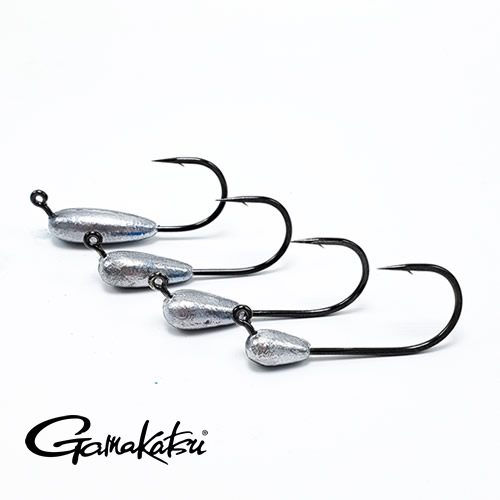
Short Shank Tube Jig Head
Purpose: Casting Jig Head
Tube Sizes: 2″- 3″
Article Updated: 9/27/22 By Team GSO Fishing

